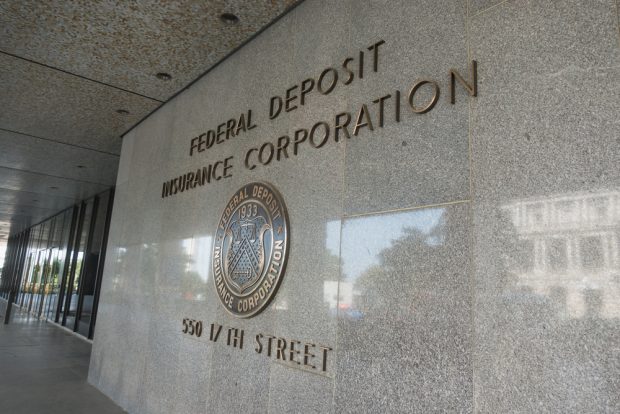 Credit: denisismagilov/stock.adobe.com
Credit: denisismagilov/stock.adobe.com
NCUA Chair Kyle Hauptman warned credit union leaders that loan quality has been deteriorating over the past three years, and NCUA credit specialists outlined ways credit unions have been caught off guard.
“NCUA’s examiners have observed trends of declining capital levels, rising delinquency rates and lower earnings across the system and at specific institutions,” Hauptman told more than 1,000 people who attended the NCUA’s “Managing Credit Risk” webinar Tuesday.
Recommended For You
Delinquency rates and rolling 12 month net charge-off rates for used vehicle loans were the highest on record in March. The rolling 12-month net charge-off for credit cards exceeded the peak during the global financial crisis 15 years ago, he said.

“NCUA continues to see signs of strain on balance sheets, particularly consumer stress,” he said. “Although inflation has retreated in the country in general, higher price levels along with higher interest rates have continued to strain household budgets.”
NCUA credit specialists presented data showing asset growth peaked at a 12-month rate of 19% through March 2021, while portfolio growth peaked at 20% through December 2022. The rates through March 31 were 3.3% for assets and 2.6% for loans — the lowest loan growth rate in at least 20 years. Asset growth is at the slowest since 2011, when the nation was recovering from the Great Recession.
The 60-day-plus loan delinquency rate was 0.73% as of March 31, down from 0.77% a year earlier and near levels typical for March from 2013 through 2017. The delinquency rate in December, which is usually the highest of the year, peaked at 0.98%, which was the highest since it was 1.01% in December 2013. Over the past 20 years, it peaked at 1.84% in December 2009.
The trailing 12-month net charge-off rate was 0.81% in March, which was the highest since June 2012’s 0.82% rates.
Credit cards and used car loans have had the worst deterioration.
Credit card delinquencies were 2.0% in March, higher than the pre-pandemic peak of 1.4% in December 2019 and the highest since December 2009’s 2.1% rate. Charge-offs were 5.2% in March the highest since 4.6% in March 2010.
Used car loan delinquencies were 0.95% on March 31, the highest since 0.80% in September 2017. The charge-off rate was 1.11% for the 12 months through March, well above the previous high of 0.88% through December 2016.
NCUA credit specialists said inadequate reporting and other poor practices are often associated with credit unions that fall into difficulty. They included:
- Reports that focus on loan originations “without adequate attention to the level and trends of credit risk across the entire loan portfolio,” Edward Beil, a credit union specialist, said.
- Insufficient reporting on credit risk metrics or lending policy exceptions for new loan originations.
- Inadequate due diligence and poor risk assessments over new lending programs and partnerships with third parties. ”Examiners have sometimes found minimal monitoring and reporting over new lending programs, as well as instances where new loan products were not authorized or addressed within board approved policies,” Beil said.
- Entering contracts with third parties that obligated the credit union to originate or purchase a given volume of new loans. “This can result in the credit union over committing capital before the risks of the new lending program are fully understood,” Beil said.
- A lack of reporting on the severity of delinquencies. “Two different credit unions could have the same delinquency rate, but still have drastically different credit risk profiles depending on the severity of delinquencies at each credit union,” Biel said.
- A lack of timely or consistent loan charge-offs. “Effective credit union policies clearly outline how and when delinquent loans will be charged off, delaying these charge-offs understates’ loss rates, which can result in the credit union under reserving or loan losses,” Biel said.
- Not updating minimum credit scores or adjusting credit score underwriting requirements based on changing default in loss rates.
- Taking a set-and-forget approach to concentration limits. “The economy changes, the loan portfolio changes and risk profiles change,” Simon Hermann, a credit union specialist, said. “So just because the concentration limit was reasonable five years ago doesn’t necessarily mean that it’s still reasonable today. Concentration limits are ideally reevaluated and updated periodically.”
- Having unsupported concentration limits on loan types.
“There have been instances observed by examiners where the board or management at a credit union was primarily focused on growing the loan portfolio, so each time a concentration limit was reached, the policy limit was simply increased to allow for more loan growth,” Hermann said.
“Concentration limits are put in place to protect the viability of the credit union,” he said. “This doesn’t mean the concentration limits can’t ever be raised, but if they are raised, the decision is ideally discussed, analyzed and well supported."
Contact Jim DuPlessis at [email protected].
© Touchpoint Markets, All Rights Reserved. Request academic re-use from www.copyright.com. All other uses, submit a request to [email protected]. For more inforrmation visit Asset & Logo Licensing.







